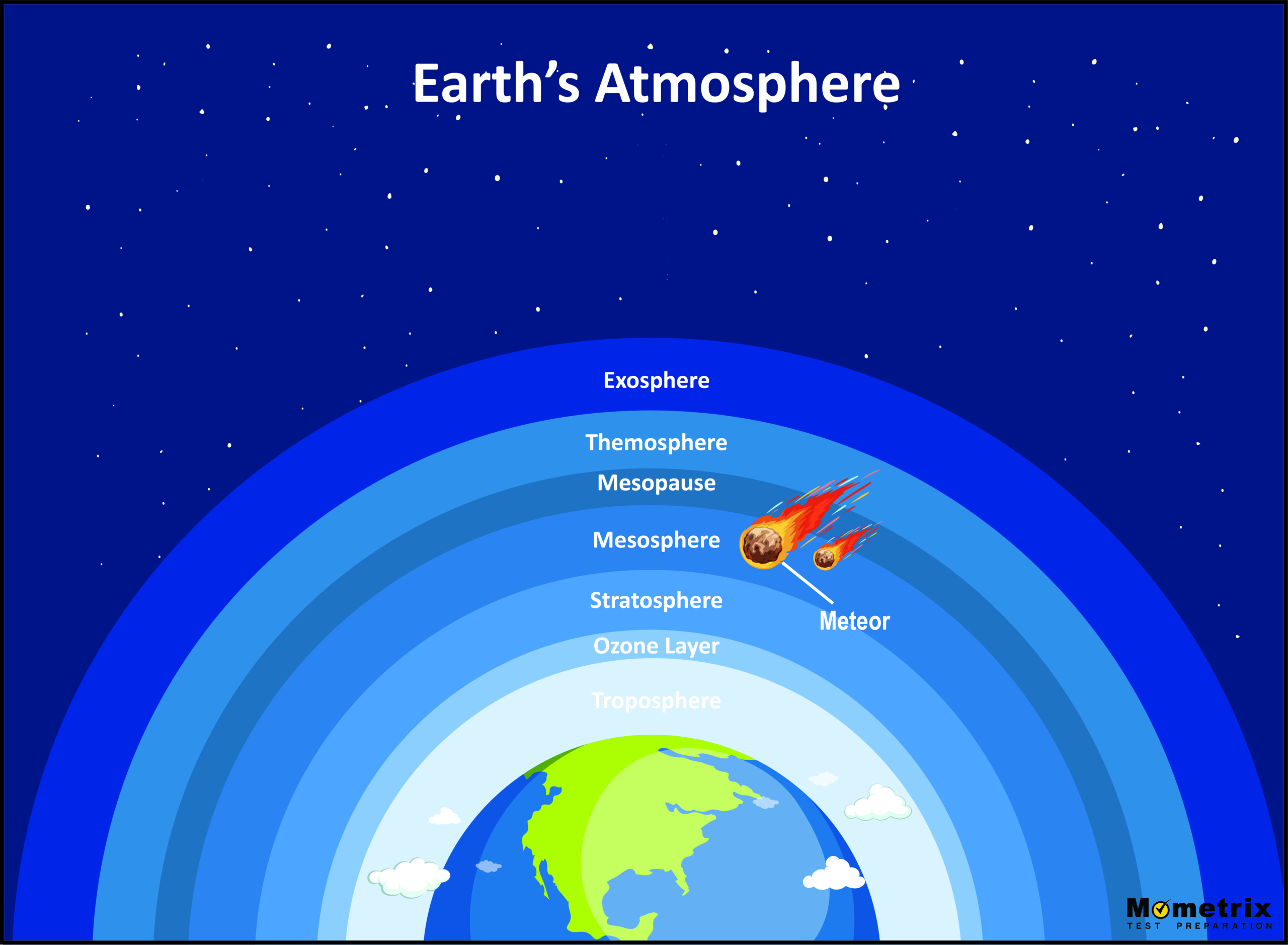A Comprehensive Review of the Earth’s Atmosphere

When someone tells you to “get your head out of the clouds”, you should teFll them you can’t help it because you live in the Troposphere! All science jokes aside, we really do live in the Troposphere, and there are four additional layers of the Earth’s atmosphere!
Before we get into the layers of Earth’s atmosphere, I wanted to share with you what it’s made of. The atmosphere contains 78% Nitrogen, 21 % Oxygen, about 1% Argon, .04% Carbon Dioxide, and then various small amounts of Neon, Helium, Methane, Krypton, Hydrogen, and Water Vapor.
Earth’s Atmosphere Layers
As I vaguely mentioned, there are five layers to the Earth’s atmosphere. In order from closest to the surface to furthest from it is the Troposphere, Stratosphere, Mesosphere, Thermosphere, and the Exosphere.

The Troposphere is the atmospheric layer closest to the surface of the earth. It is four to 12 miles thick and contains about half of the entire atmosphere! As you’ve figured out by now, this is the layer of the atmosphere that sustains life. The parts of the troposphere closest to the ground are warmer, and the farther up in this layer, the colder it gets. Additionally, lots of water vapor and dust get trapped in this layer which helps with the formation of clouds.
The second layer, the Stratosphere starts above the Troposphere and extends to about 31 miles above the Earth’s surface. The Stratosphere holds the ozone layer and absorbs the harmful radiations from the sun. Ozone is the layer of three oxygen atoms that shields the earth’s surface from the sun’s harsh rays. The stratosphere also contains very dry air that is roughly 1000 times thinner than the air at sea level. This thin air is what makes it possible for jets to travel through the stratospheric layer of the atmosphere.
The third layer is the Mesosphere. This layer starts at 31 miles above Earth’s surface and ends at about 53 miles. It contains the coldest part of the atmosphere reaching temperatures of nearly minus 130 degrees Fahrenheit. These below freezing temperatures occur in the top parts of the Mesosphere called the Mesopause. Not a whole lot of studies have been conducted on this layer of the atmosphere because it is hard to get to. Jets can’t travel that high, and satellites or space shuttles aren’t able to stay that low. Really all that’s known is that meteors tend to burn up in the Mesosphere. A meteor is piece of rock or matter that has been broken off in space and travels through the atmosphere. When they cross the Mesosphere, friction and momentum cause the meteor to burn up and appear as a light crossing the sky.
The fourth atmospheric layer is the Thermosphere. The Thermosphere begins at around 56 miles above the Earth’s surface and ends anywhere between 310 and 620 miles. This layer can house temperatures up to 4500 degrees Fahrenheit. That’s significantly hotter than the Mesopause! This layer is technically part of Earth’s atmosphere, but due to its low air density, the Thermosphere is usually associated with outer space. This layer is home to the International Space Station and is the layer that multiple space shuttles have flown to. Have you ever heard of the Auroras Borealis or Australis? Well, these atmospheric beauties take place in the Thermosphere.
FUN FACT #1: The Auroras Borealis and Australis occur from the collision of particles and atoms in space not being able to withstand the amounts of energy they create at the point of collision. When the energy is shed from the atoms, the beautiful photons of light are dispersed, created the auroras.
FUN FACT #2: There is a layer called the Ionosphere that overlaps the Mesosphere, Thermosphere, and the Exosphere. The Ionosphere gets its name from the electrically charged ions that fill its layer. The ions are created from interactions between the Ionosphere’s gases with the sun’s solar radiation. This layer of the atmosphere is heavily affected by the magnetic fields from the sun and the earth.
The fifth and highest layer of the Earth’s atmosphere is the Exosphere. This layer is the thinnest of all of the layers of the atmosphere. It merges into the interplanetary space and is composed of mostly hydrogen and helium. Its particles are spread far out from one another and aren’t necessarily considered gaseous due to the incredibly low density of the air. In this layer, there’s no way for a human to breathe on their own, and even if you could, the Exosphere’s freezing temperatures would be enough to keep you from visiting!
Thanks for learning about the Earth’s atmosphere with me! See you next time.